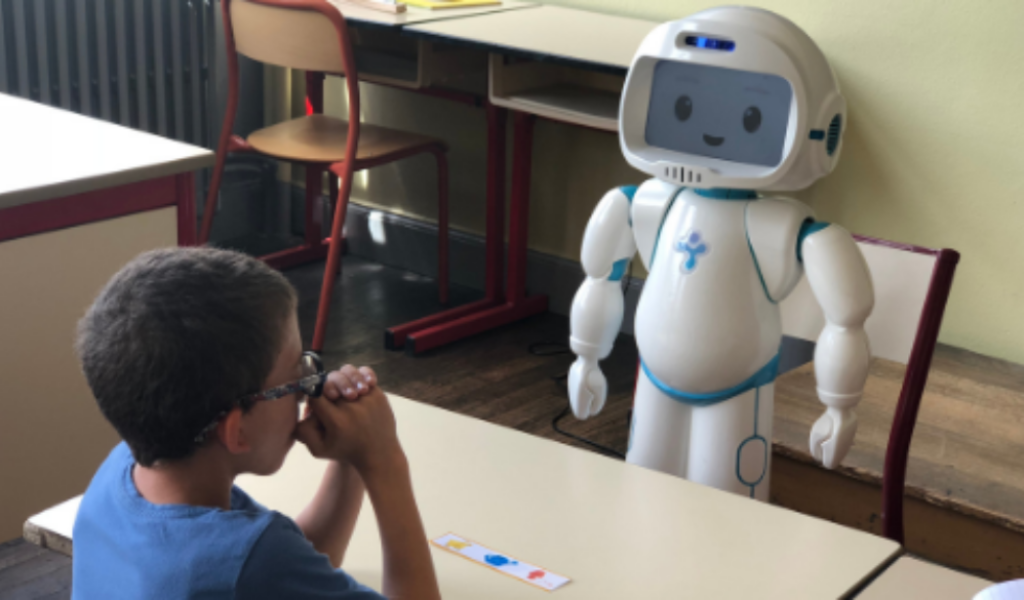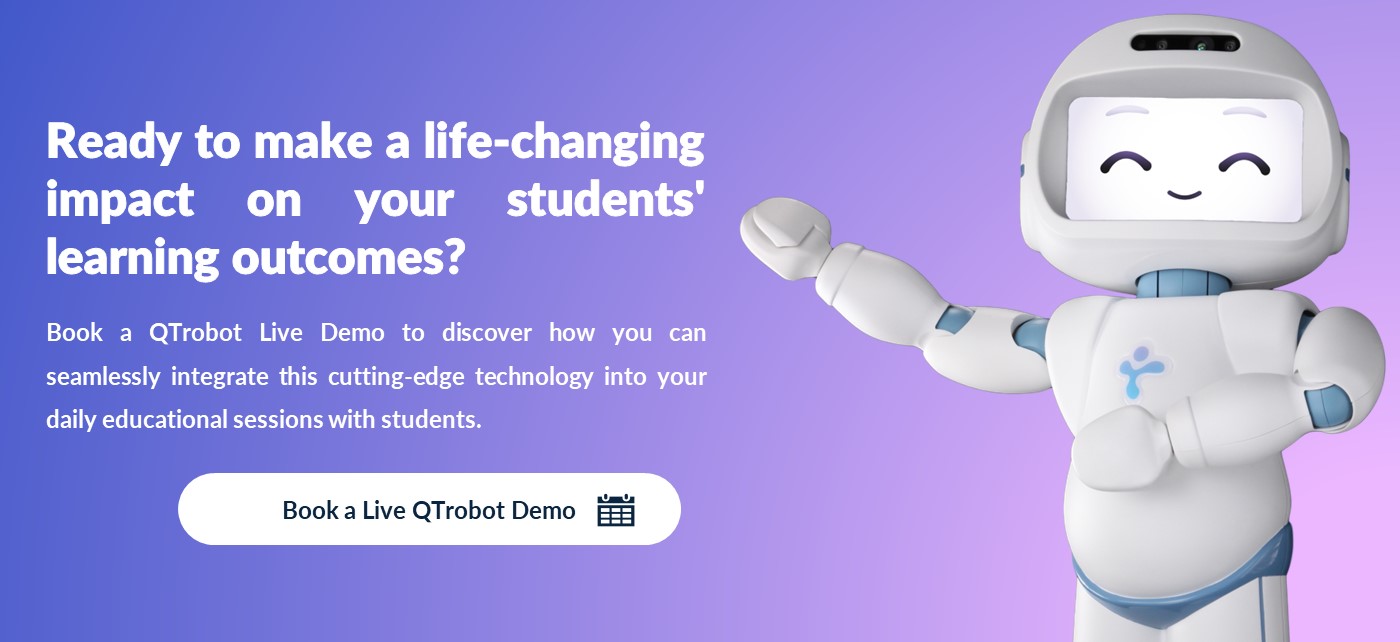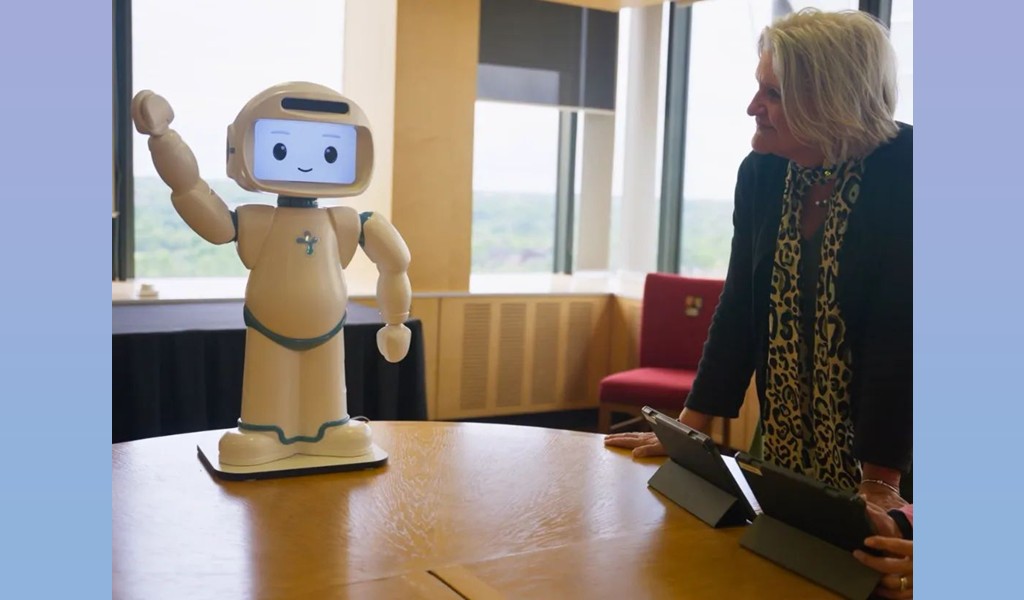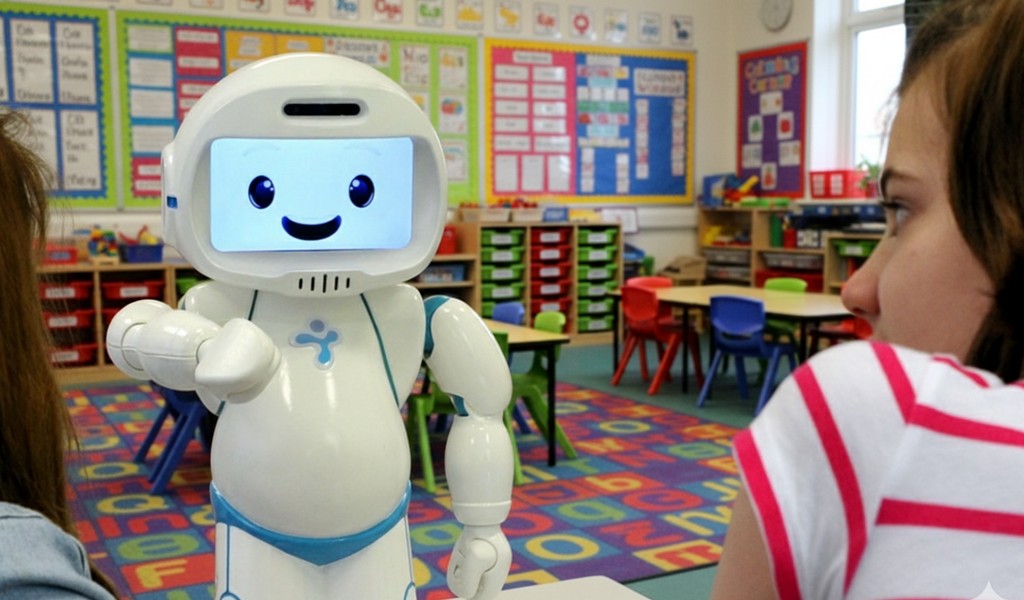In this case study, speech therapists evaluate the impact of QTrobot on improving the effectiveness of speech therapy for students with autism. Based on their observation, using a robot can enhance speech therapy effectiveness by improving the engagement and collaboration of students on the spectrum and by encreasing imitation and motivation to use verbal language.
Integration of QTrobot in the institute for children with autism:
The institute for autistic and psychotic children (EIPA) received the QTrobot with a 2-hours workshop for therapists and educators of the institute on how to program and control the QTrobot using its graphical user interface.
Therapists and educators were encouraged to develop their own programs for the robot, and integrate the robot in their existing activities as they see fit. The therapists and educators learnt how to program and control the QTrobot following the workshop and were able to program the robot and integrate it into their activities without further support of QTrobot technical team.
The QTrobot was then used by a speech therapist for a duration of 6 months with 14 children with autism spectrum disorder during individual sessions and with 7 children in group setting.
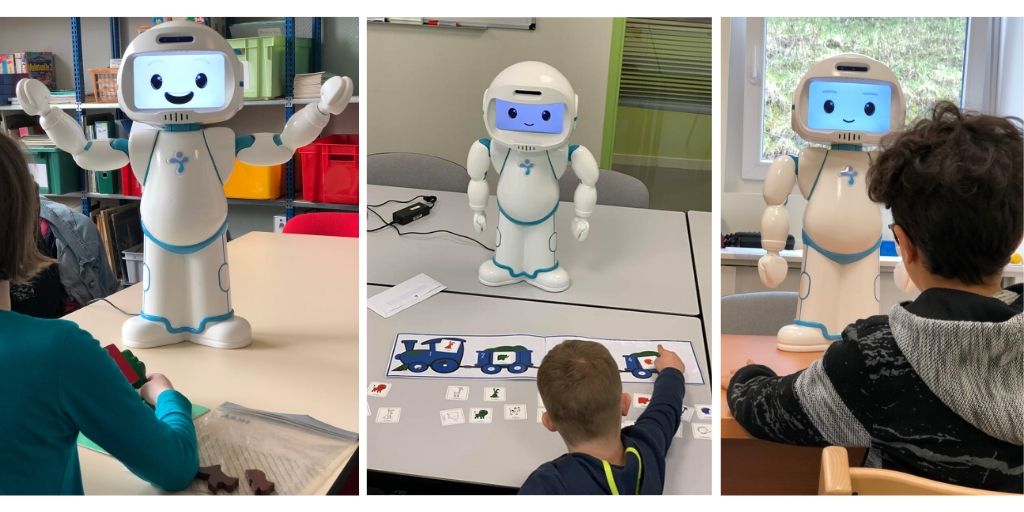
Impact of QTrobot on autistic children in individual therapy sessions:
1- Eliciting spontaneous interaction in children with ASD:
Some children spontaneously approached the robot from the first robot-assisted training session. This behaviour was observed even from the students who tend to avoid interaction with teachers and therapists.
Children initiated the interaction with QTrobot by one of the following ways:
- Looking at QTrobot: All the children looked at the robot with interest and analyzed the screen representing the face. This happened in all children, even those who tend to avoid eye contact, to have fleeting eye contact, and those who tend to look out of the corner of their eyes.
- Touching QTrobot: Most children also tried to touch the robot. They often tried to touch the hands and arms of the robot to prompt the robot to move. They also touched the face of the robot while it showed facial expressions.
- Verbal interaction with QTrobot: some children said hello to the robot as soon as they saw it. Some took the initiative to speak to the robot and made a request or made comment. For example, when reading a book, children showed an image, addressed the robot by commenting on the picture. Children imitated the robot when it was showing a facial expression while talking.
2- Increasing children’s collaboration and motivation to participate in the therapy sessions:
Working with QTrobot improved children’s motivation and collaboration during the speech therapy sessions. Therapists observed that children are better collaborating during the speech therapy sessions when at the beginning of the session, they are informed that they will work with QTrobot at the end of the session. They tended to remain seated and had a better performance in the proposed exercises and given instructions. In this case, QTrobot acted as a reinforcer for children.
In the case of one particular child, he tended to refuse to leave his class to attend the speech therapy session and the therapist had difficulty to attract him to the session. However, since the QTrobot was introduced in his training session, he started spontaneously leaving the class to participate in the speech therapy sessions, while smiling and showing a collaborative mood. He also regularly asked to work with the robot.
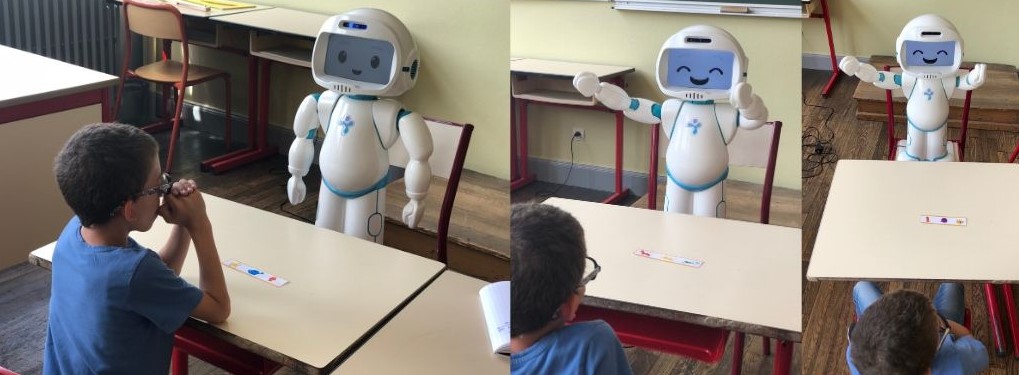
QTrobot teaching receptive language and identification to children with ASD
3- Improving attention, engagement and concentration:
Most of the children had higher attention and concentration while working with QTrobot. Children spent a longer time working with the robot compared to the times that they work with the therapist alone. The combination of gestures, facial expressions and speech had the highest effect on attracting children’s attention.
4- Reducing disruptive and stereotypical behaviours:
During the activities with QTrobot, therapists observed that the number and the duration of stereotypical behaviors in children are reduced. These disruptive behaviors happened less often and they lasted shorter comparing to the time that QTrobot was not used in the training session. Also, the behaviours had less intensity. For example, if the child moved the arms and the whole body during the session without the robot, when working with QTrobot, the movements were just limited to shaking in the hands.
5- Elevating children’s mood and attitude:
Most children had a better mood during the interaction with QTrobot comparing to the time they worked with the therapist alone. Children showed their happiness and interest by smiling and laughing more frequently when working with QTrobot.
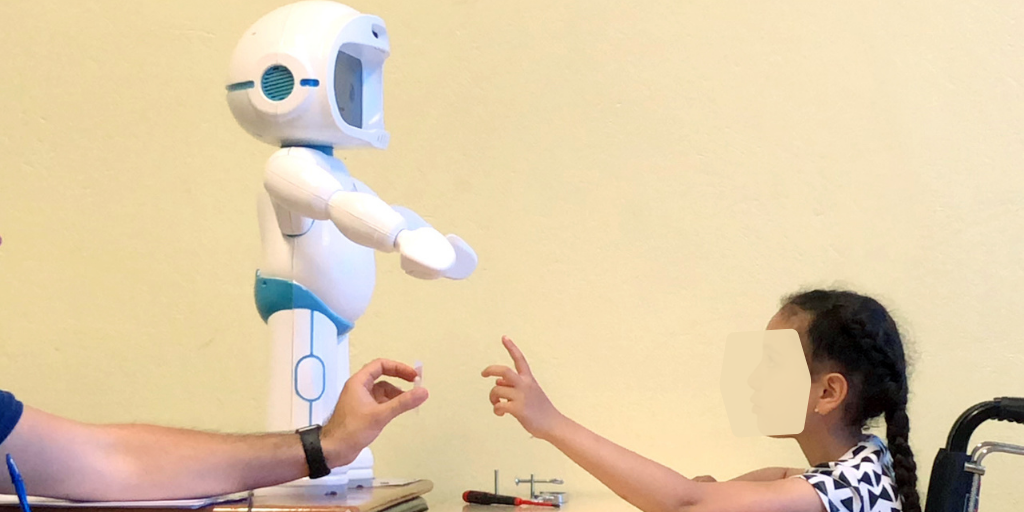
QTrobot teaching expressive language to children with ASD
6- Improving imitation:
Most children imitated different expressions and behaviours of the robot directly, while the same children did not imitate the same expressions when they were demonstrated by their therapist or when some cards with the same expressions of the robot were shown to them.
- Some children spontaneously imitated the robot’s exclamations associated with emotions after doing the same activity three or four times.
- Some children imitated the robot’s behaviours when they were prompted.
- Some children did not imitate the robot directly. However, they just listened to the robot and they repeated the pronounced words just when they were asked: “What did you hear?”.
7- Improving the usage of verbal language:
Some children used more verbal language and words when they were informed that they will be working with QTrobot. Also in speech exercises, children put more effort, when they were working with the robot. moreover, they were more tolerant to be corrected and they repeated the words more often. Before using the robot, children used to return their heads and avoid the articulation effort when working with their therapist.
